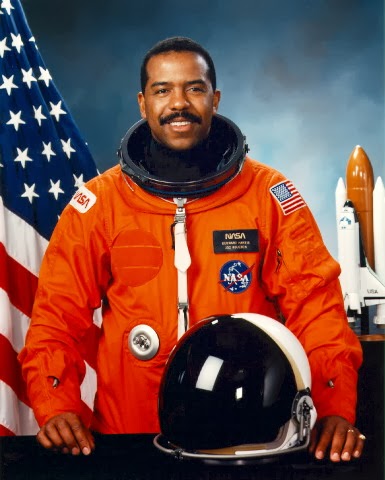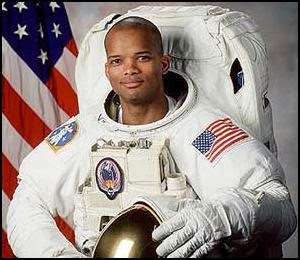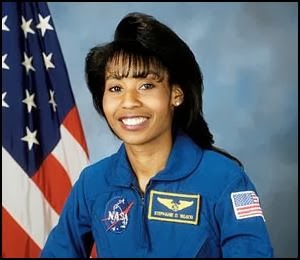NASA ASTRONAUT
PERSONAL DATA: Born June 26, 1956, in Temple, Texas. Married to the former Sandra Fay Lewis of Sunnyvale, California. They have one child. He enjoys flying, sailing, skiing, running, scuba diving, art and music. Bernard's mother, Mrs. Gussie H. Burgess, and his stepfather, Mr. Joe Roye Burgess, reside in San Antonio, Texas. His father, Mr. Bernard A. Harris, Sr., resides in Philadelphia, Pennsylvania. Sandra's parents, Mr. & Mrs. Joe Reed, reside in Sunnyvale.
EDUCATION: Graduated from Sam Houston High School, San Antonio, Texas, in 1974; received a bachelor of science degree in biology from University of Houston in 1978, a doctorate in medicine from Texas Tech University School of Medicine in 1982. Dr. Harris completed a residency in internal medicine at the Mayo Clinic in 1985. In addition, he completed a National Research Council Fellowship at NASA Ames Research Center in 1987, and trained as a flight surgeon at the Aerospace School of Medicine, Brooks Air Force Base, San Antonio, Texas, in 1988. Dr. Harris also received a master's degree in biomedical science from the University of Texas Medical Branch at Galveston in 1996.
ORGANIZATIONS: Member of the American College of Physicians, American Society for Bone and Mineral Research, Aerospace Medical Association, National Medical Association, American Medical Association, Minnesota Medical Association, Texas Medical Association, Harris County Medical Society, Phi Kappa Phi Honor Society, Kappa Alpha Psi Fraternity, Texas Tech University Alumni Association, and Mayo Clinic Alumni Association. Aircraft Owners and Pilot Association. Association of Space Explorers. American Astronautical Society. Member, Board of Directors, Boys and Girls Club of Houston. Committee Member, Greater Houston Area Council on Physical Fitness and Sports. Member, Board of Directors, Manned Space Flight Education Foundation Inc.
SPECIAL HONORS: 1996 Honorary Doctorate of Science, Morehouse School of Medicine. Medal of Excellence, Golden State Minority Foundation 1996. NASA Award of Merit 1996. NASA Equal Opportunity Medal 1996. NASA Outstanding Leadership Medal 1996. The Challenger Award, The Ronald E. McNair Foundation 1996. Award of Achievement, The Association of Black Cardiologists 1996. Space Act Tech Brief Award 1995. Alpha Omega Alpha Medical Honor Society, Zeta of Texas Chapter 1995. Election of Fellowship in the American College of Physicians 1994. Distinguished Alumnus, The University of Houston Alumni Organization 1994. Distinguished Scientist of the Year, ARCS Foundation, Inc., 1994. Life Membership, Kappa Alpha Psi Fraternity. NASA Space Flight Medals 1993, 1995. NASA Outstanding Performance Rating 1993. JSC Group Achievement Award 1993. Physician of the Year, National Technical Association, 1993. Achiever of the Year, National Technical Association, 1993. American Astronautical Society Melbourne W. Boynton Award for Outstanding Contribution to Space Medicine 1993. Achievement Award, Kappa Alpha Psi Fraternity 1993. Who's Who Among Rising Young Americans Citation 1992. Certificate of Merit, Governor of Texas 1990. City of San Antonio Citation for Achievement 1990. NASA Sustained Superior Performance Award 1989. NASA Outstanding Performance Rating 1988. NASA Sustained Superior Performance Award 1988, 1989. National Research Council Fellowship 1986, 1987. Phi Kappa Phi Honor Society 1985. Outstanding Young Men of America 1984. University of Houston Achievement Award 1978. Achievement Award 1978.
NASA: Bernard A. Harris, Jr. (M.D.)








